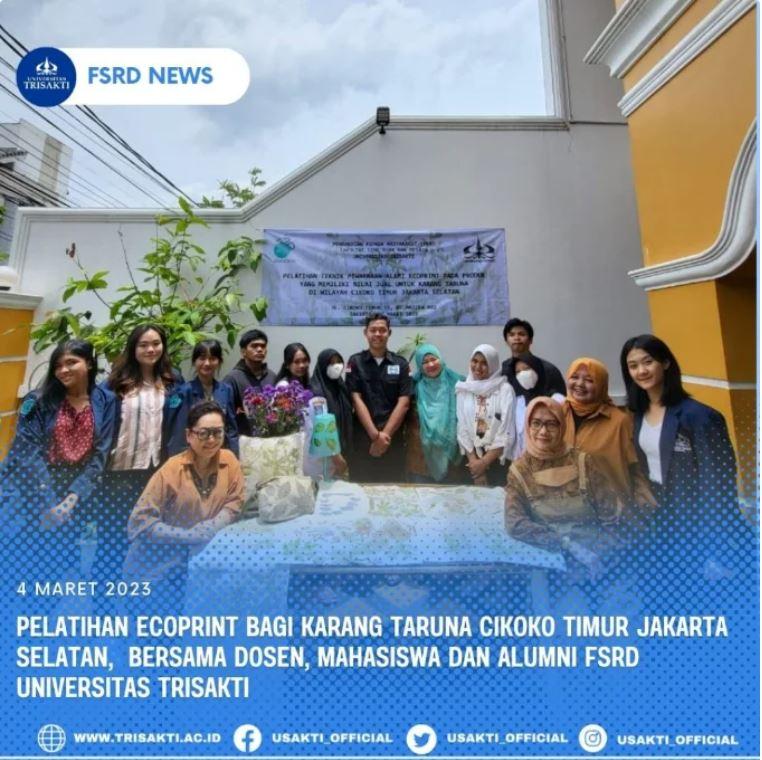Contact Us
- JL. Kyai Tapa No. 1 Grogol
- Jakarta Barat, Indonesia
- Phone:
- (62-21) 566 3232
- Whatsapp:
- (+62) 882 194 856 74
- (+62) 877 707 077 03
- Fax: (62-21) 564 4270
- Email: humas@trisakti.ac.id

The Faculty of Arts and Design, Trisakti University, carries out the Tri Dharma of Higher Education activities such as teaching and research, as a lecturer also has the duty to carry out Community Service (PKM). On Saturday, March 4, 2023, the Usakti FSRD lecturer team with the head of Susy Irma Adisurya, S.Sn, M.Ds provided training in Community Service activities together with partners from Youth Organization in the Cikoko Timur RW. 02 area. Other lecturers who are members of the training team are Dr. Menul Teguh Rianti, S.Sn, M. Pd – Dra Atridia W, M. Ds – Ariani, S. Sn, M. Ds – Resky Annisa S.Ds, M.Ds. as well as Product Design Alumni Dra.Damayanti Budiarti, M. Hum…, and students.
Besides lecturers, there were also students who participated as instructors and documentation teams during the training, namely Dwitiya Putri H – Jian Khansa H – Valecia Natalie P and Tegar Bumi Pertiwi. This PKM is entitled “Ecoprint Natural Coloring Technique Training on Products that have Selling Value for Youth Organization in the Cikoko area, South Jakarta.
This training prioritizes using environmentally friendly materials for coloring techniques, using leaves and flowers. In addition, calico cloth, cutting board, wooden punch, plastic mica, alum or vinegar are required. The technique used in the Ecoprint training is the beating technique. During the training, a wooden cutting board and a wooden beater were used as the base. When beating before the leaves and flowers are hit, the flowers and leaves are first soaked in alum or vinegar. Plastic mica is used so that the colors from the leaves and flowers absorb more into the fabric.
In this training, in addition to teaching ecoprint techniques with hitting techniques, it also teaches related design knowledge such as the composition of shapes and colors for the arrangement of leaves and flowers that will be printed. It is expected that with the basis of design science with a good shape composition, the layout of the leaves is not original so that the large and small shapes of the leaves can form an interesting composition. When using flowers, the color of the flowers used must also be treated with bright colors so that the color is easily absorbed by the fabric and becomes interesting among the composition of the leaves. After finishing the prints in the sun first for one week, after that just soak in alum water again or vinegar water, then rinse and dry. After that, it can only be used or utilized according to its function.
The training was well received by participants from the youth organization. Ecoprint can be printed on fabric to be used as aesthetic elements of the interior such as pillowcases, tablecloths, lampshades and others. In this training, the youth tried it on calico cloth. All participants and instructors were happy with the results obtained today. At the end of the event, Mrs. Susy Irma A, S.Sn, M.Ds as the chief lecturer instructor gave a set of ecoprinting equipment in the form of a hammer and wooden cutting board. To the youth representative of the youth organization. Hopefully, the knowledge of the ecoprint technique can be spread to other teenagers. To improve the ability of art and creativity and even improve the family economy if the works that are practiced are in great demand by the general public.
